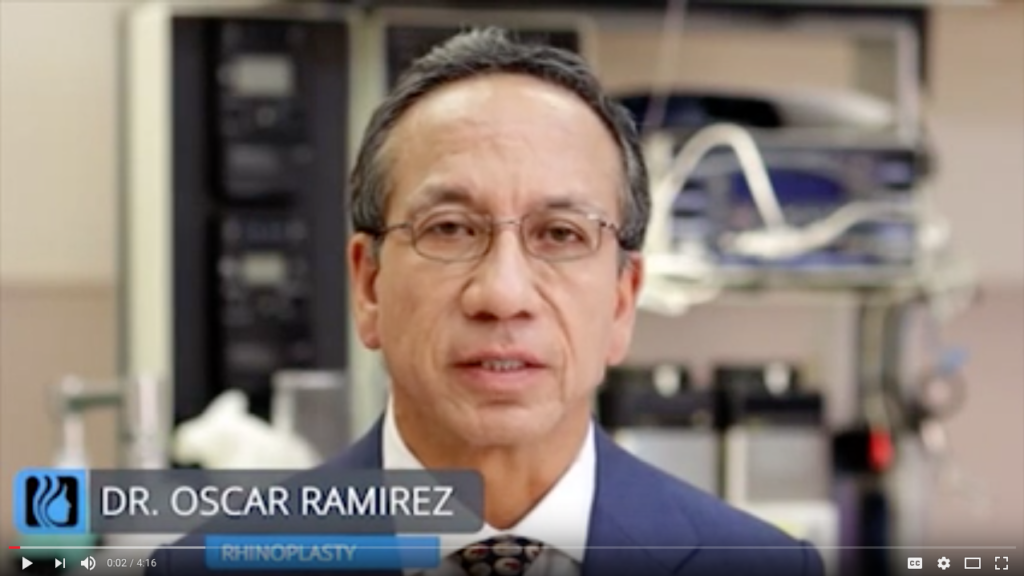Rhinoplasty
“Rhinoplasty, or more commonly known as a “Nose Job”, is a procedure that enhances the appearance of the nose. This is achieved by performing various techniques based on the patient’s needs. Examples may be changing the shape, the size or both with the ultimate goal to give a very pleasing, symmetrical appearance. A Septoplasty may also be performed, at the same time, which can correct pre-existing breathing problems.”
Believe it or not, a Rhinoplasty is one procedure that can DRAMATICALLY change a person’s facial appearance!
It is also the most difficult and daunting surgeries, for some doctors, in the Plastic Surgery specialty. I will even go, so far, and say that this surgery has been mastered by only very few surgeons in the world. Unfortunately, you see a different story when you browse the web because it seems like every plastic surgeon is an “expert” in rhinoplasty. Based on my very own experience, I will tell you that it takes many years of study, research and spending time with the few masters to even become just an “above average” rhinoplasty surgeon! If I haven’t driven home the point yet, let me emphasize that it takes great talent, focus and EXPERIENCE. Meaning, a plastic surgeon needs to have performed hundreds of cases to become a “true master”. The challenge here is that the nose is composed of delicate and thick soft tissues along with complex cartilaginous and bone structures. The internal workings of the nose are so complex in nature that it requires ligamentous support and can have irregular breathing spaces. The nasal airway has very little tolerance to collapse as well, which means that narrowing of the nasal walls and any reduction affects the entire mechanism. Every maneuver that is performed has profound consequences on the aesthetic appearance as well as breathing. Post-operatively, swelling and scarring have great influence in the final outcome. This may take years to manifest itself. The typical rhinoplasty reduces the bony and cartilaginous skeleton, narrows the nasal bone while the envelope is usually unchanged. In that process, the complex ligamentous network that connects all these structures are disrupted. These make the nose vulnerable to the forces of scar contracture. Done incorrectly, this could result in one or more of the following bad effects: Irregular contour on the dorsum or on the sides or tip, Nasal valve collapse with an inverted V deformity, “polly beak” deformity of the supratip area, turndown tip, alar retraction, nasal asymmetry and a deviated tip. Worse yet, any miscalculation during the procedure or, even an accident post-operatively, will greatly affect the healing process. Again, this can be associated with significant difficulty in breathing. To prevent these problems, and to provide the best aesthetic result, I have designed the “Superstructure Rhinoplasty”. This is an advanced concept in Rhinoplasty that comes from my many, many years of experience coupled with much time studying, researching and mastering the technique. This technique provides support and/or restores the support of all the structures of the nose. Done correctly, the forces of scar contracture do not affect the short or long-term outcome. Most importantly, the patient ends up with NO breathing problems. I have also designed a couple special osteotomies: A “Longitudinal Osteotomy” and an “L Osteotomy”. Both of these techniques provide more stability to the nasal bones.
Secondary, tertiary or quaternary rhinoplasty is when the surgeon attempts to correct a botched rhinoplasty! A Rhinoplasty that has been performed at least once before, or many times prior. I specialize in this type of Rhinoplasty. I will admit that these are much more difficult and time consuming to perform, but I enjoy performing them. There are times when I may require rib grafts, fascia grafts, and other surgical maneuvers to obtain a good result. I have to be honest with you: A revisional rhinoplasty may never be as good as the result that can be obtained from a well-executed primary (first) rhinoplasty. Therefore, your best chance is, typically, with first rhinoplasty. Moral to the story is to choose your surgeon wisely!
